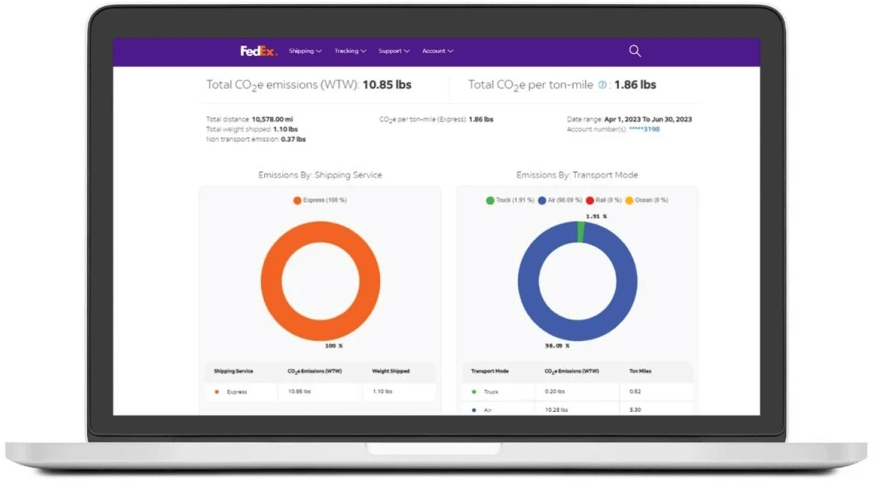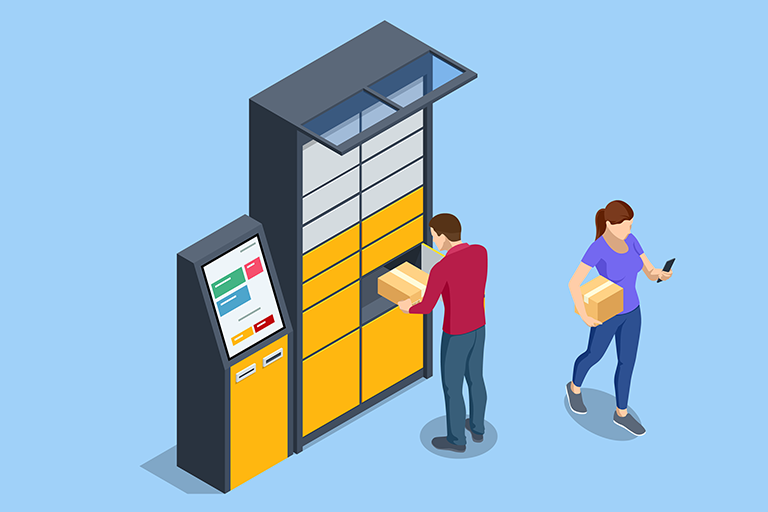How To Get Greater Visibility Into Supply Chain Sustainability
Estimates show that a major part of greenhouse gas emissions comes from a company’s supply chain. With the right data insights, you can optimize your sustainability strategy.
Have you ever wondered how sustainable your supply chain is? With a growing interest in the overall sustainability of business operations, SMEs of all sizes are looking at ways to measure and reduce environmental impact.
A business’s supply chain can account for more than 90% of their total greenhouse gas (GHG) emissions, dwarfing that of their operational emissions. And as supply chains generate around 60% of all carbon emissions globally, addressing supply chain sustainability is essential for businesses of all sizes to achieve net zero.
At the same time, governments around the world are ratcheting up their climate regulations on multiple fronts; from sustainable production and ethical procurement to supply chain due diligence. Some are directly putting pressure on businesses to take action on carbon emissions.
Consumer expectations are changing, too. We recently found out that 7/10 consumers in AMEA prefer to buy from companies with an effective ESG strategy in place. The same number prioritize making sustainable choices when shopping online just as much as receiving their goods quickly.
With greater scrutiny and consumer concern, businesses need to make sure they have tools to measure, understand, and act on supply chain emissions. This process has been historically difficult, with companies having to go through laborious paper chains and correspondence to extract emissions data from their suppliers.
Looking for more information on your supply chain impact and ways to take action to keep customers informed? Check out our tips to help SMEs and e-commerce businesses meet their sustainability targets.
Access carbon emissions data and insights for greater visibility
A business’s supply chain can account for more than 90% of their total greenhouse gas (GHG) emissions, dwarfing that of their operational emissions. And as supply chains generate around 60% of all carbon emissions globally, addressing supply chain sustainability is essential for businesses of all sizes to achieve net zero.
At the same time, governments around the world are ratcheting up their climate regulations on multiple fronts; from sustainable production and ethical procurement to supply chain due diligence. Some are directly putting pressure on businesses to take action on carbon emissions.
Consumer expectations are changing, too. We recently found out that 7/10 consumers in AMEA prefer to buy from companies with an effective ESG strategy in place. The same number prioritize making sustainable choices when shopping online just as much as receiving their goods quickly.
With greater scrutiny and consumer concern, businesses need to make sure they have tools to measure, understand, and act on supply chain emissions. This process has been historically difficult, with companies having to go through laborious paper chains and correspondence to extract emissions data from their suppliers.
Looking for more information on your supply chain impact and ways to take action to keep customers informed? Check out our tips to help SMEs and e-commerce businesses meet their sustainability targets.
Access carbon emissions data and insights for greater visibility

For any SME, an effective strategy is the sum of multiple, individual wins. Obtaining carbon emissions data is fundamental to your sustainability strategy. Once you have the full picture in place, you can pivot where needed, as well as provide stakeholders with a transparent picture.
A great place to start is by digitizing carbon data. Businesses can then identify carbon hotspots in the supply chain and create actions to improve energy efficiency, including more eco-friendly practices to reduce costs and emissions. It also enables reporting on emissions with suppliers and stakeholders more efficiently.
FedEx® Sustainability Insights follows this approach. It allows FedEx customers to view the estimated carbon emissions data of their shipments, based on individual tracking numbers as well as aggregate historical data for their accounts.
Created by FedEx Dataworks, this cloud-based engine uses near-real time FedEx network data to help visualize a variety of metrics including mode of transport, service type, and country or territory for all eligible FedEx shipments. This enables much more transparency for reporting and strategic future planning.
Customers can run a shipping emissions report by different metrics, view total carbon emissions data and conveniently export a report document.
A great place to start is by digitizing carbon data. Businesses can then identify carbon hotspots in the supply chain and create actions to improve energy efficiency, including more eco-friendly practices to reduce costs and emissions. It also enables reporting on emissions with suppliers and stakeholders more efficiently.
FedEx® Sustainability Insights follows this approach. It allows FedEx customers to view the estimated carbon emissions data of their shipments, based on individual tracking numbers as well as aggregate historical data for their accounts.
Created by FedEx Dataworks, this cloud-based engine uses near-real time FedEx network data to help visualize a variety of metrics including mode of transport, service type, and country or territory for all eligible FedEx shipments. This enables much more transparency for reporting and strategic future planning.
Customers can run a shipping emissions report by different metrics, view total carbon emissions data and conveniently export a report document.

Partner with a logistics provider that takes climate impact seriously
Businesses have a responsibility to operate more sustainably and takes steps to ensure environmental protection. With SMEs accounting for a massive 90% of businesses worldwide, they have the power to create real impact if they adopt sustainable practices.
When it comes to tackling sustainability, it’s also important to work with the right partners to help get the job done. The transportation industry contributes significantly to greenhouse gases and accounts for nearly one quarter of global energy-related carbon emissions. As connectors in the chain, logistics providers have a role to play in helping to lower the possible impact on the planet, as well as meet consumer expectations.
That’s why at FedEx, we continue to innovate our operations in this space. Our aim is reduce our environmental impact and ultimately achieve global carbon neutral operations by 2040. To achieve this, we’re working to reduce emissions and waste, replace older technologies and vehicles and modernize our facilities.
Businesses have a responsibility to operate more sustainably and takes steps to ensure environmental protection. With SMEs accounting for a massive 90% of businesses worldwide, they have the power to create real impact if they adopt sustainable practices.
When it comes to tackling sustainability, it’s also important to work with the right partners to help get the job done. The transportation industry contributes significantly to greenhouse gases and accounts for nearly one quarter of global energy-related carbon emissions. As connectors in the chain, logistics providers have a role to play in helping to lower the possible impact on the planet, as well as meet consumer expectations.
That’s why at FedEx, we continue to innovate our operations in this space. Our aim is reduce our environmental impact and ultimately achieve global carbon neutral operations by 2040. To achieve this, we’re working to reduce emissions and waste, replace older technologies and vehicles and modernize our facilities.

FedEx® Sustainability Insights is part of a suite of digital tools available for businesses to level up their green practices. It also has the future potential to create opportunities for network efficiency, with data-backed predictive insights and modelling.
By accessing the right tools to obtain data on supply chain carbon emissions, businesses can focus on ESG solutions and taking positive action to reduce their environmental footprint. And ultimately, win the trust and respect of customers, communities, and stakeholders.
Want to learn more about our sustainability initiatives? Head on over to our sustainability page.
By accessing the right tools to obtain data on supply chain carbon emissions, businesses can focus on ESG solutions and taking positive action to reduce their environmental footprint. And ultimately, win the trust and respect of customers, communities, and stakeholders.
Want to learn more about our sustainability initiatives? Head on over to our sustainability page.
***

















 The Latest
The Latest